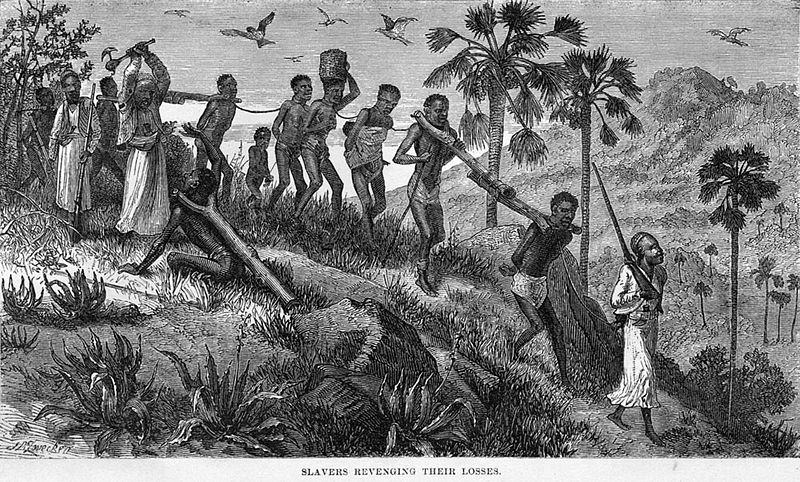Fichièr:Slaves ruvuma.jpg

Talha d'aquesta previsualizacion: 800 × 482 pixèls. Autras resolucions : 320 × 193 pixèls | 640 × 385 pixèls | 1 000 × 602 pixèls.
Fichièr d'origina (1 000 × 602 pixèl, talha del fichièr: 286 Ko, tipe MIME: image/jpeg)
Istoric del fichièr
Clicar sus una data e una ora per veire lo fichièr tal coma èra a aqueste moment
| Data e ora | Miniatura | Dimensions | Utilizaire | Comentari | |
|---|---|---|---|---|---|
| actual | 6 abril de 2013 a 02.36 |  | 1 000×602 (286 Ko) | Underlying lk | larger file |
| 14 març de 2007 a 16.36 |  | 329×178 (23 Ko) | Béka~commonswiki | {{Information |Description=Arab slave traders and their captives along the Ruvuma (Rovuma) river (in today's Tanzania and Mozambique) |Source=http://www.frontline.org.za/news/making_disciples_nations.htm; also in various non-Internet publications |Date=18 |
Paginas que contenon lo fichièr
La pagina çaijós compòrta aqueste imatge :
Usatge global del fichièr
Los autres wikis seguents utilizan aqueste imatge :
- Utilizacion sus af.wikipedia.org
- Utilizacion sus ar.wikipedia.org
- Utilizacion sus arz.wikipedia.org
- Utilizacion sus ast.wikipedia.org
- Utilizacion sus azb.wikipedia.org
- Utilizacion sus be.wikipedia.org
- Utilizacion sus bn.wikipedia.org
- Utilizacion sus bs.wikipedia.org
- Utilizacion sus ca.wikipedia.org
- Utilizacion sus cs.wikipedia.org
- Utilizacion sus de.wikipedia.org
- Utilizacion sus diq.wikipedia.org
- Utilizacion sus el.wikipedia.org
- Utilizacion sus en.wikipedia.org
- Mozambique
- Slavery
- Death march
- Economic history of Africa
- History of slavery
- Slavery in Africa
- Thomas Jefferson and slavery
- 19th century
- Brussels Anti-Slavery Conference 1889–90
- Portal:Pan-Africanism/Selected history
- Portal:Pan-Africanism/Selected history/4
- Indian Ocean slave trade
- User:Caesarz870/sandbox3
- Medieval and early modern Africa
- Utilizacion sus es.wikipedia.org
- Utilizacion sus eu.wikipedia.org
- Utilizacion sus fi.wikipedia.org
- Utilizacion sus frr.wikipedia.org
- Utilizacion sus fr.wikipedia.org
- Utilizacion sus ga.wikipedia.org
- Utilizacion sus gd.wikipedia.org
- Utilizacion sus gl.wikipedia.org
- Utilizacion sus ha.wikipedia.org
- Utilizacion sus hy.wikipedia.org
Veire l'utilizacion globala d'aqueste fichièr.
